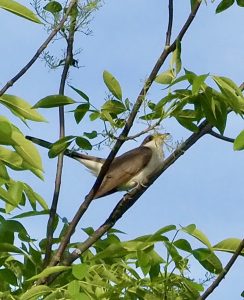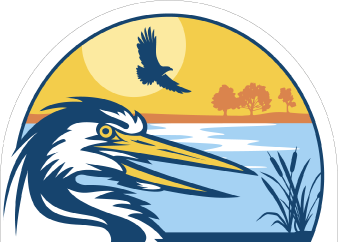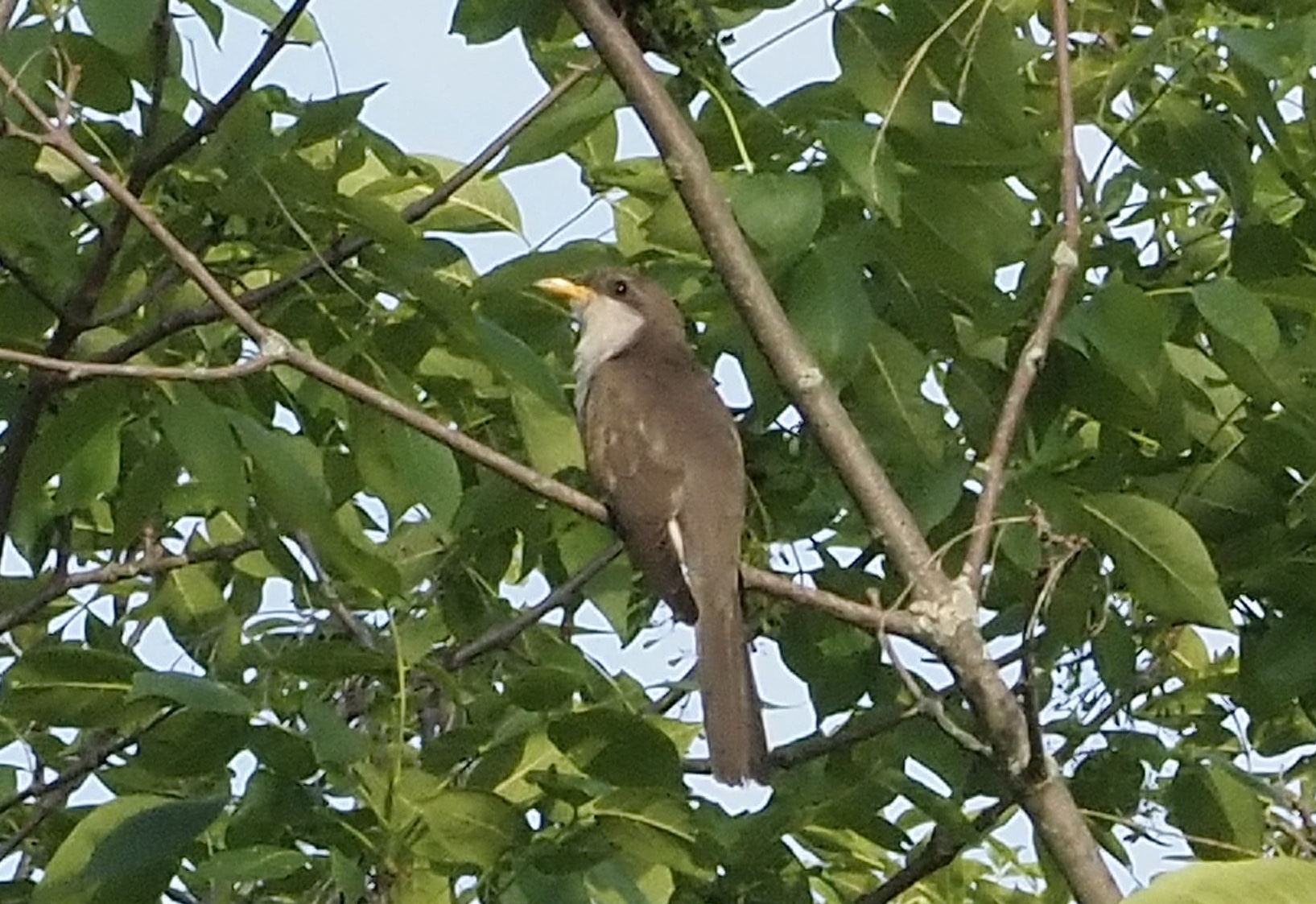
While the Refuge has been closed, the third New York State Breeding Bird Survey continues and we have arrived at one of the most active months to record breeding behaviors – June! There are tons of tips on how to participate in the NYBBS on the eBird website.
If you’re participating, good for you! I am and I’ve committed to cover two priority blocks near my home. One happens to be on the Refuge and part of Oak Orchard WMA and the other is just east of my home. But did you know you can document breeding bird behavior in any block now, including where you live? That means your backyard birds are out there waiting for you to enter them as part of the survey. So check out how to set your eBird app for the correct portal and get started if you haven’t yet! It’s fun! It is a different way of birding that requires a bit more patience and longer looking at a slower pace. Perfect for your backyard!
Click here to become a member!
Click here to donate!
The idea is to know the codes that rank bird behaviors from O bserved, P ossible, P robable, all the way to C onfirmed.
Here’s an example. On a recent evening I sat in the side yard on a chair quietly listening and watching. I was able to record a number of singing birds I’d already heard for over seven days, so to those I added the S7 code. Those are P ossible. I saw a Chipping Sparrow carrying food diving into a shrub (code CF) and an American Robin incubating her second clutch of eggs, actually using the same nest she built over again for her second brood (On Nest code ON). Those are counted as C onfirmed.

Photo by Tom Morien
The best observation was something I’d never seen before. I had been hearing both Black-billed and Yellow-billed Cuckoos singing for about a week. Luckily, I saw the female Yellow-billed Cuckoo in the top of an ash tree. She was raising and lowering her tail and repeated that several times. Suddenly, a male cuckoo appeared and accepted her invitation to copulate!
The male, all ashiver, stood on her wings which she kept lowered close to her body. Cuckoos are quite secretive so I felt tremendously fortunate to have seen what happened! I kind of wish the code C – Courtship, Display, or Copulation was a confirmed code, but it’s P robable. I’ll have to see the cuckoos nest building, on nest, carrying food, feeding young or one of the other behaviors that qualify for the Confirmed code.
Cuckoos are an interesting case because the Yellow-billed Cuckoo and Black-billed Cuckoo often lay eggs in each other’s nests or in other species nests. So it’s possible to confirm breeding of two species at once if one happened to see a Catbird, Robin, Cardinal or Blackbird feeding an immature cuckoo!
As the atlas manual says, “Matching bird behaviors to specific codes is all you have to do to atlas!” Don’t forget that all the Refuge trails and overlooks are open for photography and wildlife and plant observations. Consider adding the NYS Breeding Bird Survey to your usual activities on the Refuge!
Links:
Atlas Essentials – https://ebird.org/atlasny/about/atlas-essentials
About the Atlas – https://ebird.org/atlasny/about
Atlas Breeding Codes – https://ebird.org/atlasny/about/breeding-codes


